ANGKOR (Day 17 - part 4)
The last of our three Hindu temples, but the second one built, was Bakong. It was constructed by Indravarman I in 881. It only got to enjoy being the state temple for a few years before the capital was moved, but additions from later centuries show that it was not abandoned.
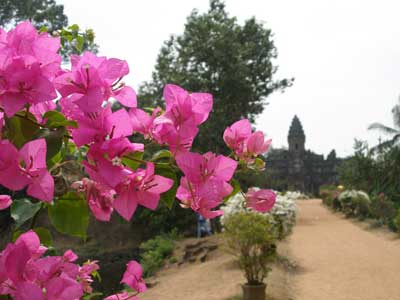
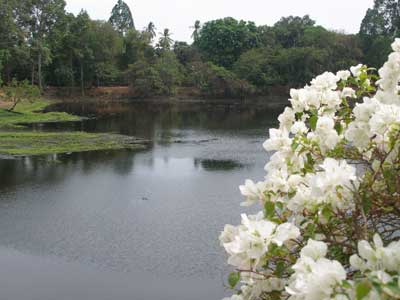

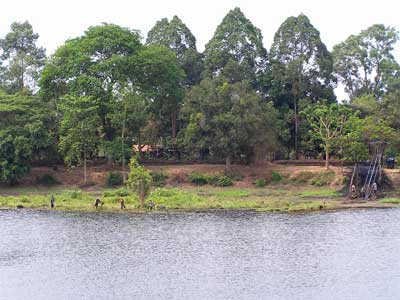
Men worked cleaning out the mucky, soggy moat.
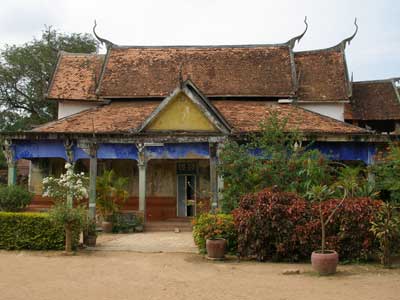

On the premises was a wat and an open-walled school
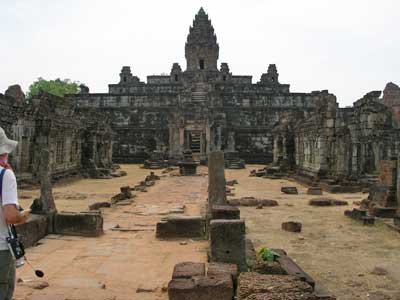

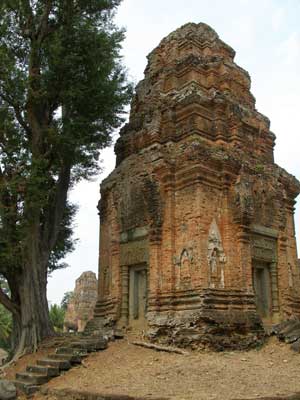
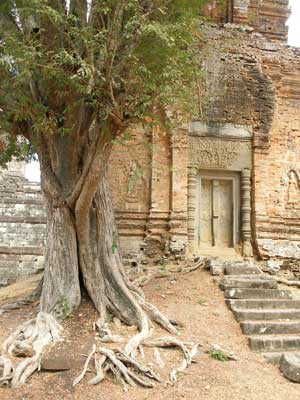
Five terraces lead up the pyramid to the main sanctuary. While the original tower had completely collapsed, it was rebuilt in the early 1940's, using as much of the original material as possible. It appears as it had probably been built some 200 years later than the rest of the temple.
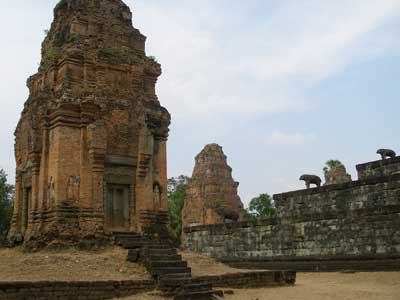
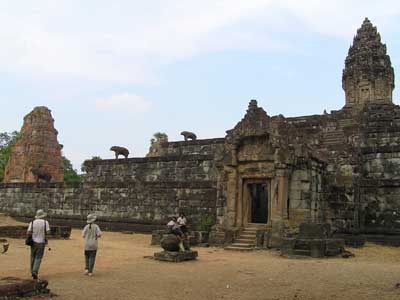
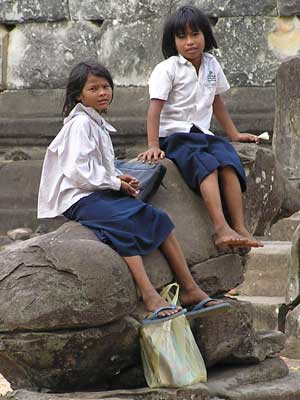
Some school kids sit on a statue of Nandi, Shiva's bull.

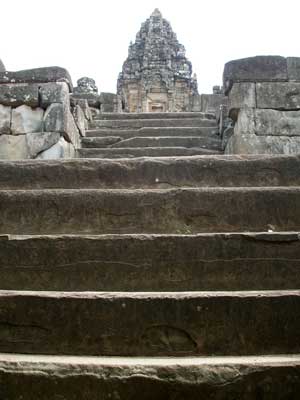
The stairway actually becomes narrower at each higher level, making the temple look larger than it actually is using perspective.
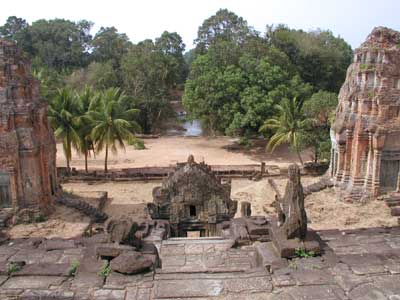
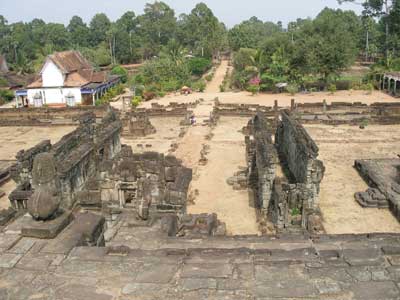
Views from the top
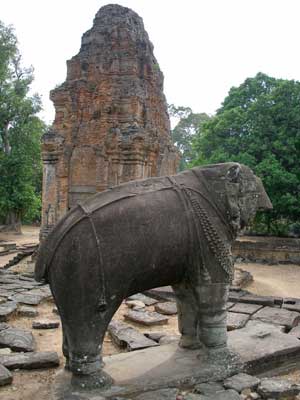

Elephants and lions stand on guard...

... except for him. He's apparently been sent to a time-out.

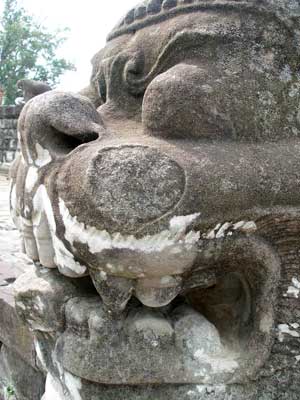
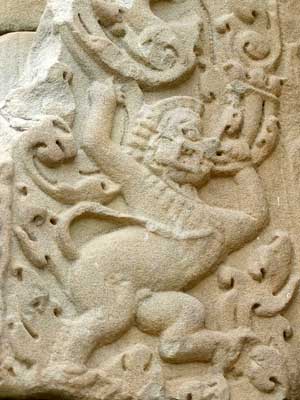
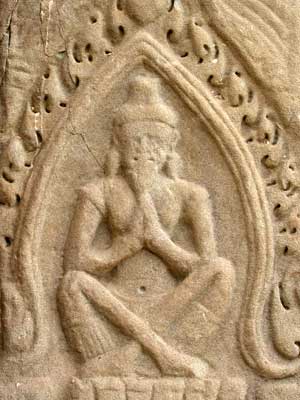
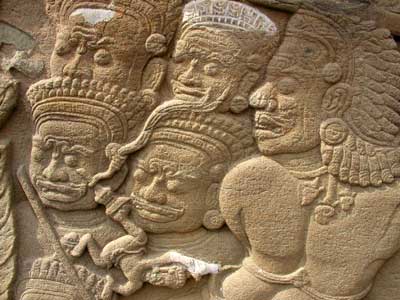
Chitra then drove us back to another section of Angkor... to where Yasovarman I had moved the new capitol.
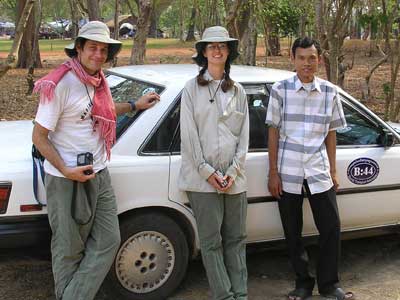
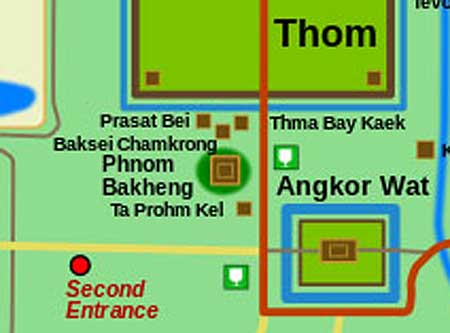
Ta Prohm Kel was one of 102 hospital chapels built by Jayavarman VII throughout the kingdom. All that remained was one tiny tower.

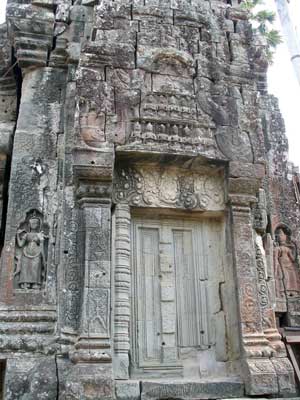
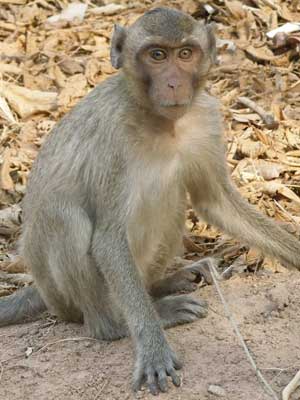

Monkeys loitered by the side of the road.
Baksei Chamkrong was a small Hindu temple dedicated to Shiva. It was dedicated to King Yasovarman I (ruled 889 - 900) by his son, King Harshavarman I (900 - 925). The temple was completed by a later successor, King Rajendravarman II (944 - 968)... who was both his uncle and first cousin.
It gets pretty convoluted at times. For example, King Jayavarman IV (928 - 941) was the son of King Indravarman I's (877 - 889) daughter and was married to his aunt, a half-sister of king Yasovarman I.
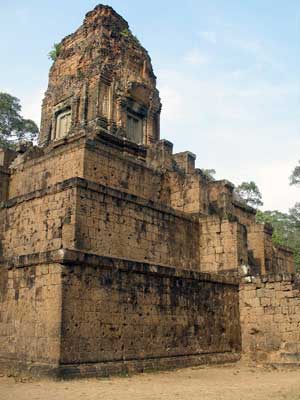
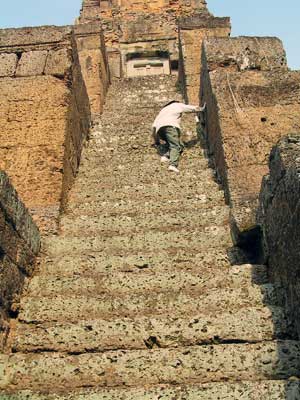
It was a very steep climb to the top.
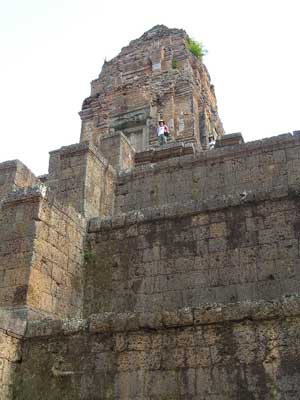
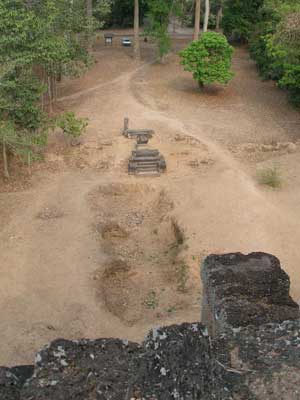
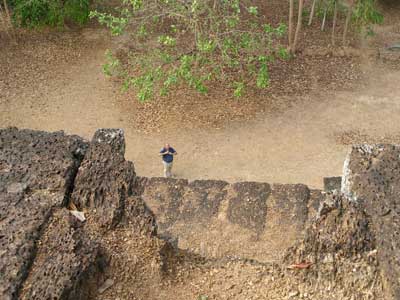
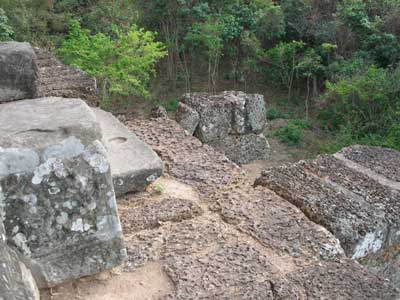
We walked out to a small platform nearby with a lingam (also linga). This is a representation of the Hindu god Shiva. Every Shiva temple had one, usually enshrined in the central tower.
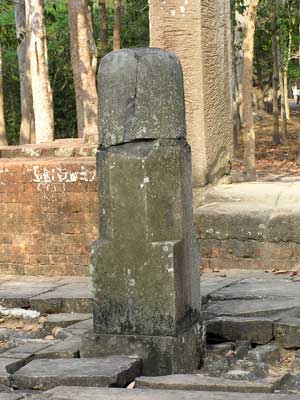
Yeah, it's a phallus... a symbol of "divine generative energy".
A bit further along, near the moat that surrounded Angkor Thom, was the small Hindu temple of Prasat Bei (literally meaning forest tower). It was comprised of three brick towers. The middle tower would have contained a lingam.
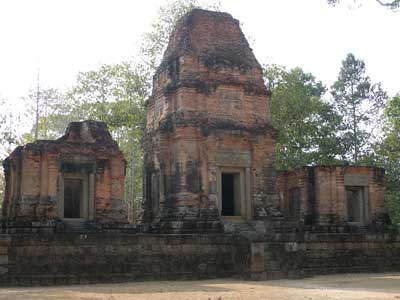
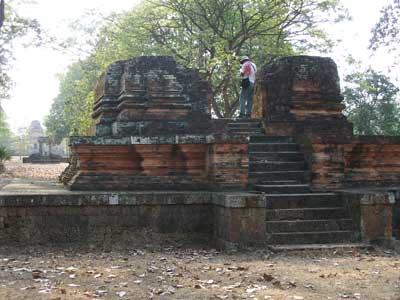
We hopped back in the taxi and headed over to Phnom Bakheng.
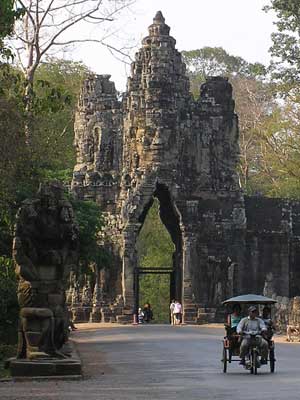
A view toward the south gate of Angkor Thom.
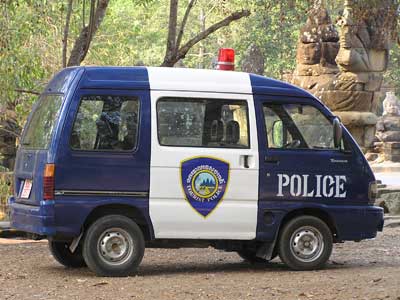
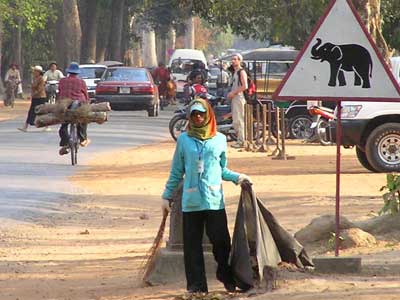
At the entrance, guys lounged about on their elephants, waiting to give tourists a ride up the hill.
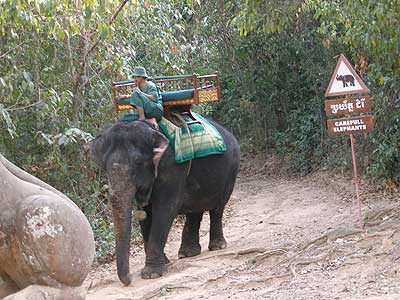
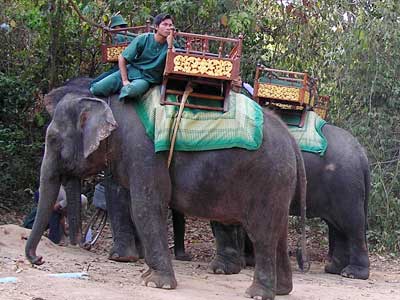
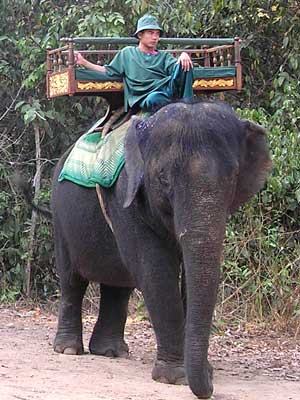
While it was a steep trek, we decided to hoof it.

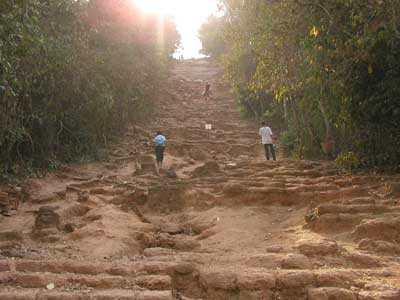
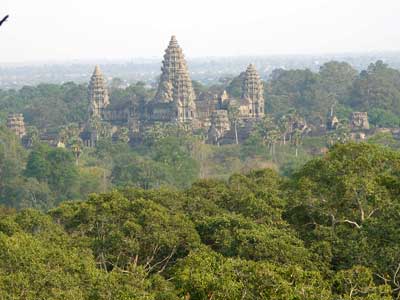
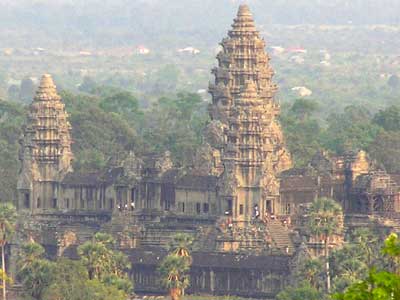
A view across the way of Angkor Wat (which was built over 200 years after Phnom Bakheng)
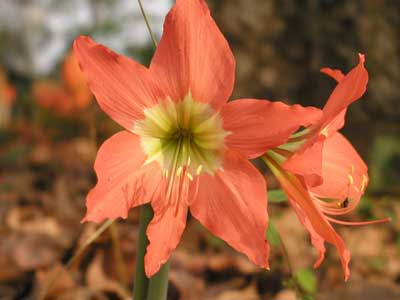

Beauty ... and the beast
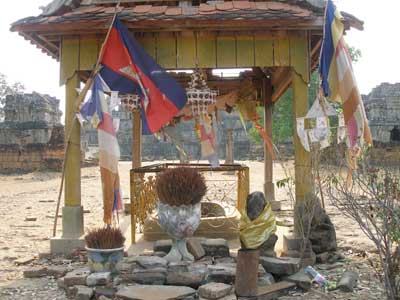
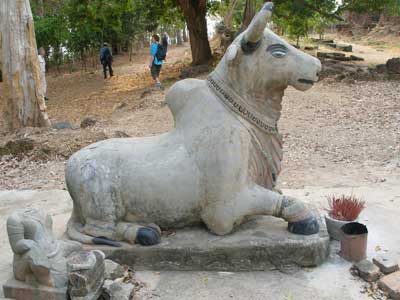
A small shrine ... complete with Nandi!
Phnom Bakheng was built between the late 800s and early 900s by King Yasovarman I as the centerpiece of Yasodharapura, his new capital in the Angkor region. It was abandoned only a few decades after its construction.
Like most other temples, it too is intended to represent Mount Meru, home of the Hindu gods. The temple has seven levels, representing the seven heavens. Originally, 108 small towers dotted the temple, but most of them have collapsed. Five shrines on the top represent the five peaks of Mount Meru.
Built on top of a 215-foot tall hill, we (along with many other tourists) felt it was be an excellent place to view the sunset.
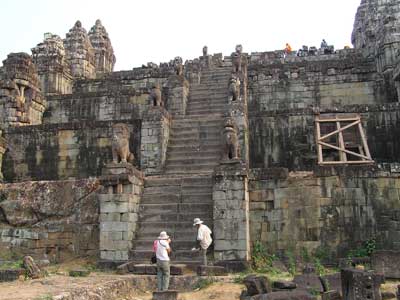
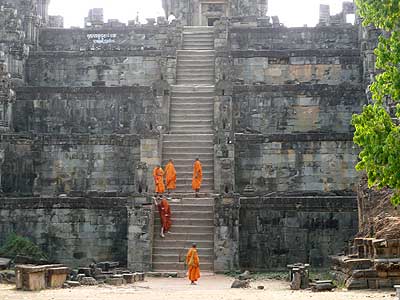
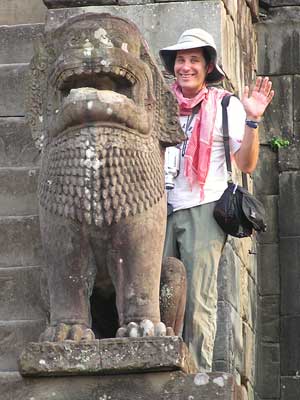
Ron with a guardian lion
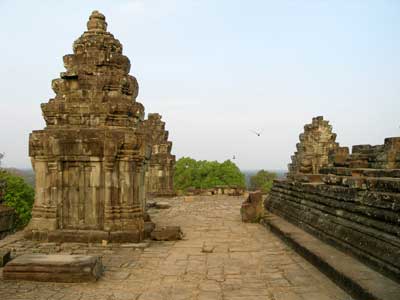
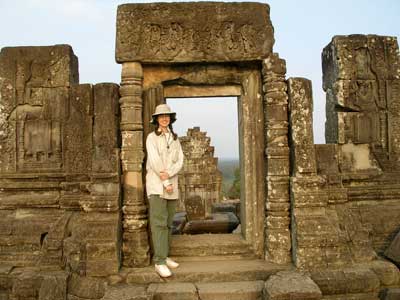

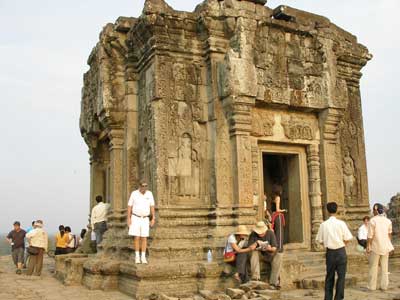
Tourists begin to pour in.
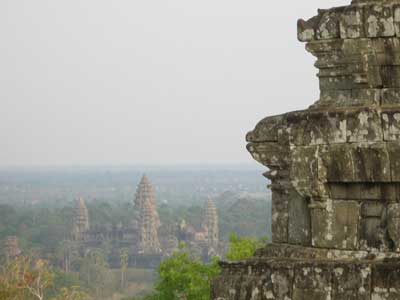
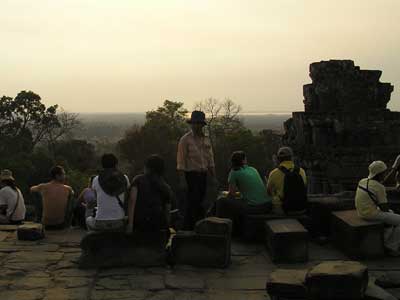
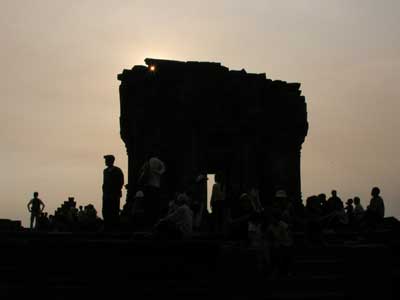
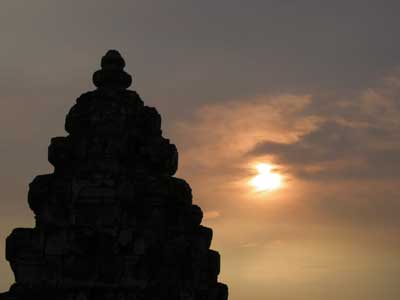
We started back early, before the sun completely set, in order to avoid the rush and as well as to be able to see. We found a much easier path down through the woods.
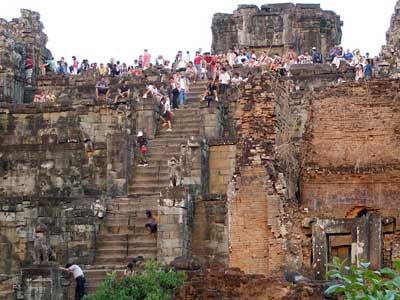
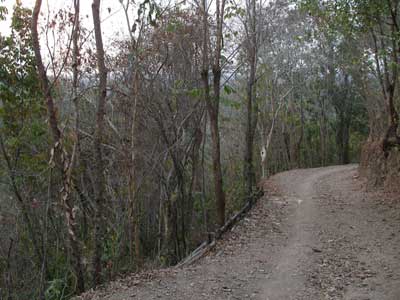
When we found Chetra, his car was completely wedged in by other cars. But all the other drivers cooperated and moved their cars around so he could get out.
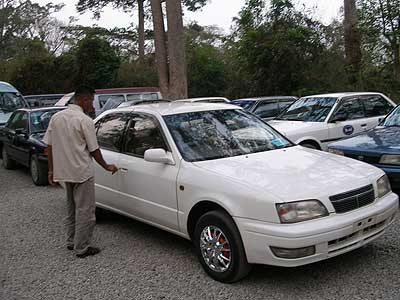
Back in Siem Reap, we grabbed some dinner at a restaurant then headed back to the hotel.
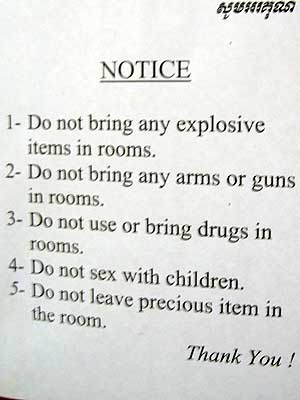
The notice on the back of the hotel room door
return • continue

